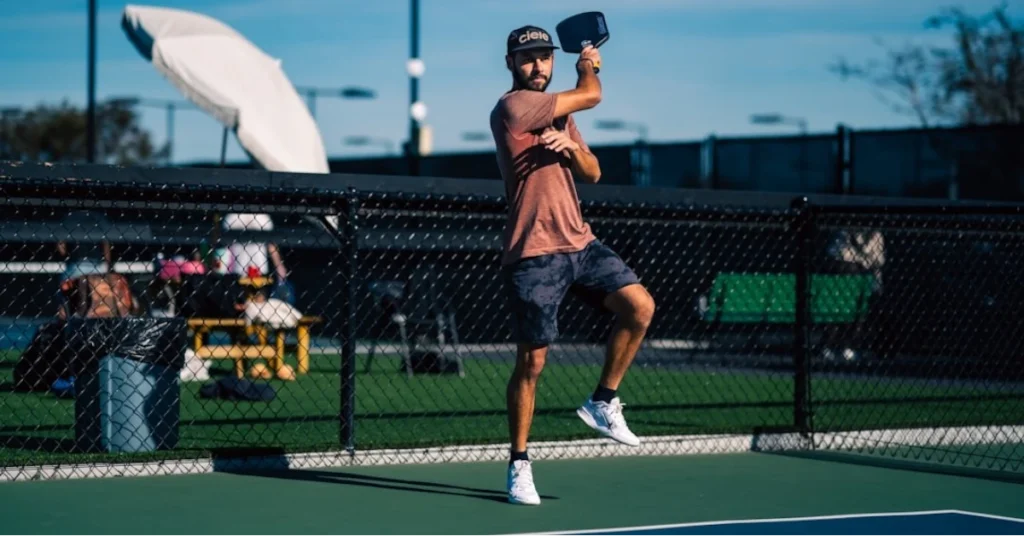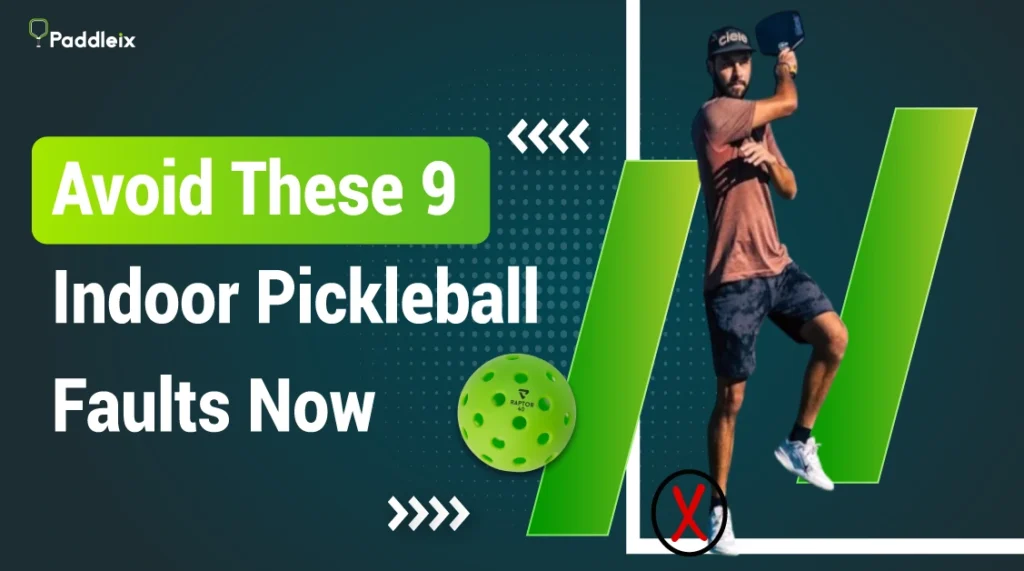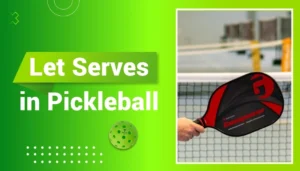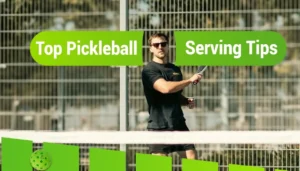I’ll never forget the first time I got called for a fault in an indoor pickleball game. It was a tight match, the score was neck-and-neck, and I thought I was about to win the point with a crisp volley.
Instead? Whistle. The ref called a Kitchen violation—I had unknowingly stepped on the line as I reached for the ball.
Just like that, the momentum shifted, and I realized something important: knowing the rules is one thing, but owning them is another.
That moment stuck with me—not because of the fault, but because it showed me how small mistakes can cost you big in indoor pickleball.
Since then, I’ve made it a point to understand every little nuance of indoor pickleball faults. So in this post, I’m going to walk you through everything I’ve learned, including the most common indoor pickleball mistakes and how you can avoid them.
Ready? Let’s dive in.
What Exactly Is a Fault?
Let’s start at the beginning: what is a fault?
In pickleball, a fault is anything that breaks the rules and causes the play to stop. It could be a foot slipping over the line during a serve, a mistimed volley, or a shot that sails into the lights above (yes, I’ve done that too).
Whether it’s something small or major, it results in a point for your opponent or loss of serve.
Quick Tip: I always remind myself—faults aren’t failures. They’re learning moments. Shake it off, reset, and get back to playing your game.
Common Indoor Pickleball Faults

Playing indoors has its quirks. The space feels tighter, lighting changes how you see the ball, and the court often reacts differently under your feet. These conditions make certain faults more common—and more frustrating—if you’re not prepared.
Foot Faults: Stepping Over the Line
This one has haunted me more times than I care to admit. When serving, the rules say you have to keep at least one foot behind the baseline. Step on or over the line before you strike the ball? Fault.
And during volleys, the Non-Volley Zone—aka “The Kitchen”—becomes sacred territory. If you step into it or touch the line while volleying, it’s an instant fault. I remember lunging for a winner once, foot just brushing the Kitchen line, and boom—point gone.
Pro Tip: I now practice serving with my back foot a solid step behind the baseline. It’s like building a safety buffer—one less thing to worry about in the heat of the game.
Kitchen Violations: Getting Too Close for Comfort
Ah, the Kitchen. I have a love-hate relationship with this zone.
Indoors, everything feels closer. It’s easy to misjudge your position and let your toe slip forward during a volley. I’ve made the mistake of thinking I was safe only to realize later on video that my toe grazed the line. Fault.
Quick Fix: I train myself to dink just from the edge of the Kitchen. It keeps me aggressive without taking unnecessary risks. The more comfortable you are hovering just outside, the better.
Double Bounce Faults: Timing Is Everything
This one’s tricky, especially if you’re aggressive by nature like me.
After the serve, the receiving team must let the ball bounce once, and the serving team must let the return bounce once too. No volleys allowed until after those two bounces.
I once lost an important rally in a rec league match because I rushed in and hit the return before it bounced. Rookie move, and a good reminder that patience pays off.
Remember: Let the bounce happen. It’s a rule that keeps the game fair and adds a beautiful rhythm to the early stages of a rally.
Hitting the Ball Out of Bounds
Seems obvious, right? But indoor play changes things.
Walls are closer, the lighting is artificial, and the bounce off indoor surfaces can be trickier to judge. I used to play a little too aggressively indoors until I noticed I was racking up unforced errors.
Pro Tip: Spend five minutes warming up before every game. Get a feel for the ball, test out how it reacts to the walls and floor. This helps me dial in my power and prevent wild shots.
Faults During the Serve: What to Watch Out For

Serving faults can sneak up on you. I’ve seen games turn on a single bad serve—heck, I’ve been the one to make that bad serve.
Here’s what I always look out for:
Illegal Serve Motion
Your serve needs to be made with an upward swing, and contact with the ball has to be below the waist. No chopping down or high hits.
My Tip: I’ve developed a slow, fluid serve motion. It helps me stay consistent and legal. There’s no need to crush the ball—it’s about control, not power.
Want to get the full scoop on playing indoors? Here’s a beginner-friendly guide that covers everything from rules to gear and events.
Incorrect Serve Placement
You must serve diagonally across and land it in the correct service box. If you hit it into the Kitchen or serve from the wrong side based on the score, it’s a fault.
More than once, I’ve lost focus and served from the wrong side after a long rally. Now I repeat the score out loud every time to center myself.
Drop Serves and Let Serves
Indoor courts are perfect for trying out drop serves—where you let the ball fall naturally before striking it.
One time, I tried to get clever and added a little flick to my toss… only to get called out. The rule says no added force—just drop it and swing.
Let serves, on the other hand, are no big deal. If your serve hits the net but still lands in the right box, you just replay the point. It’s a gift—take it and smile.
Unique Indoor Violations
Playing indoors means dealing with unique conditions—and unexpected challenges.
Ball Contacting Ceiling or Fixtures
One of my most embarrassing moments was during a lob that had just the right arc… until it smacked a hanging basketball hoop. Fault.
Low ceilings, beams, or lights can really mess with your game indoors. I now think twice before going for those towering shots.
Slippery Surfaces and Line Faults
Indoor floors can be slick—especially in gyms with polished wood surfaces.
I’ve slipped mid-pivot before, and it’s not just a fault risk—it’s a safety issue. Make sure your shoes are made for indoor courts and check the floor conditions before you start.
Safety First: These days, I carry a spare pair of shoes just in case. Traction can be the difference between a clean shot and a busted ankle.
How I Bounce Back After a Fault
We all make mistakes—what matters is how we handle them.
Stay Cool and Focused
When I make a fault, I take a deep breath, maybe smile at myself, and reset. If you dwell on mistakes, they pile up. Move on.
Want to feel more confident during matches? Understanding the nuances of how points really stack up can take your focus and flow to the next level.
Learn from It
After every game, I take a moment to think about what went wrong. If I had too many foot faults, I practice staying behind the line. If I hit too many out, I work on my shot control. It’s all part of the process.
Remember Why I’m Playing
Pickleball is my happy place. Whether I win or lose, I play because I love it—the laughs, the challenge, the friendships. Don’t let a few faults rob you of that joy.
Wrapping It Up: Let’s Keep Those Faults in Check!
So there you have it—everything I’ve learned (sometimes the hard way!) about indoor pickleball faults. From Kitchen slip-ups to ceiling surprises, these are the things that can turn the tide of a match.
But here’s the good news: the more aware you are of these potential mistakes, the easier it is to avoid them. Keep practicing, stay mindful, and most of all—enjoy the game.
I’ll see you out on the indoor court, ready to play smarter, stay focused, and maybe even get through a game without a single fault. Let’s do this.
Happy pickling, my friend!
Frequently Asked Questions (FAQs)
What is considered a fault in pickleball?
A fault is any rules violation that stops play—like stepping in the Kitchen during a volley or hitting the ball out of bounds.
Can I step into the Kitchen if the ball bounces there?
Absolutely. You just can’t volley from the Kitchen. Let it bounce, then step in and take the shot.
What happens if I serve from the wrong side of the court?
It’s a fault. Make sure to serve from the correct side based on your score—right for even, left for odd.
Are there special rules for indoor pickleball courts?
The rules are the same, but hitting the ceiling or lights indoors is usually an automatic fault.
How does the double bounce rule work?
After the serve, each team must let the ball bounce once before volleying is allowed.
Is it a fault if I call out the wrong score before serving?
If corrected before the rally’s third shot, it’s not a fault. Otherwise, play continues with the score as called.
What if I touch the Kitchen line during a volley?
That’s a fault. Always keep those toes clear of the line during volleys.
Can faults be challenged?
In casual games, it’s up to the players. In tournaments, referees make the call—and their word is final.
What’s a let serve?
When the ball hits the net but lands in the correct service box, it’s replayed. Not a fault.
How can I avoid faults indoors?
Practice footwork, get used to indoor surfaces, and keep an eye on ceilings and walls. Warming up helps a lot too.


